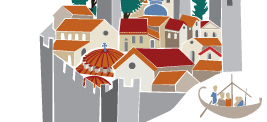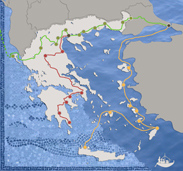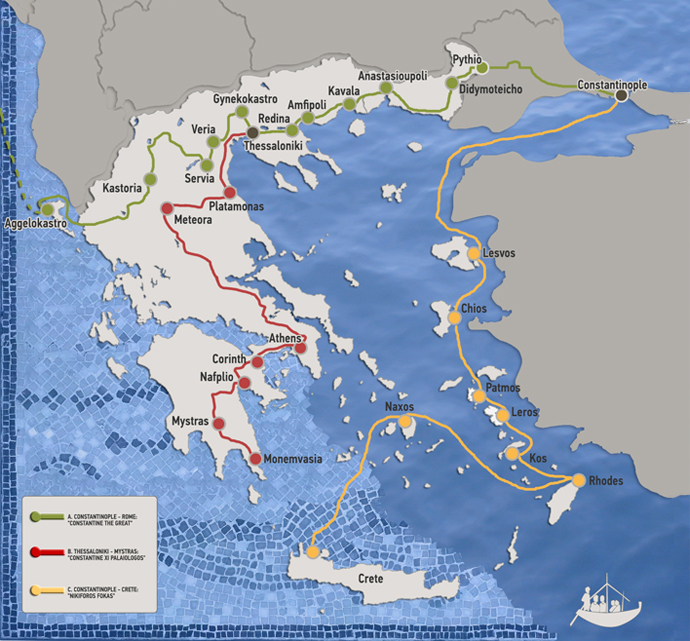
> List of cultural trails
Constantinople - Rome: "Constantine the Great"
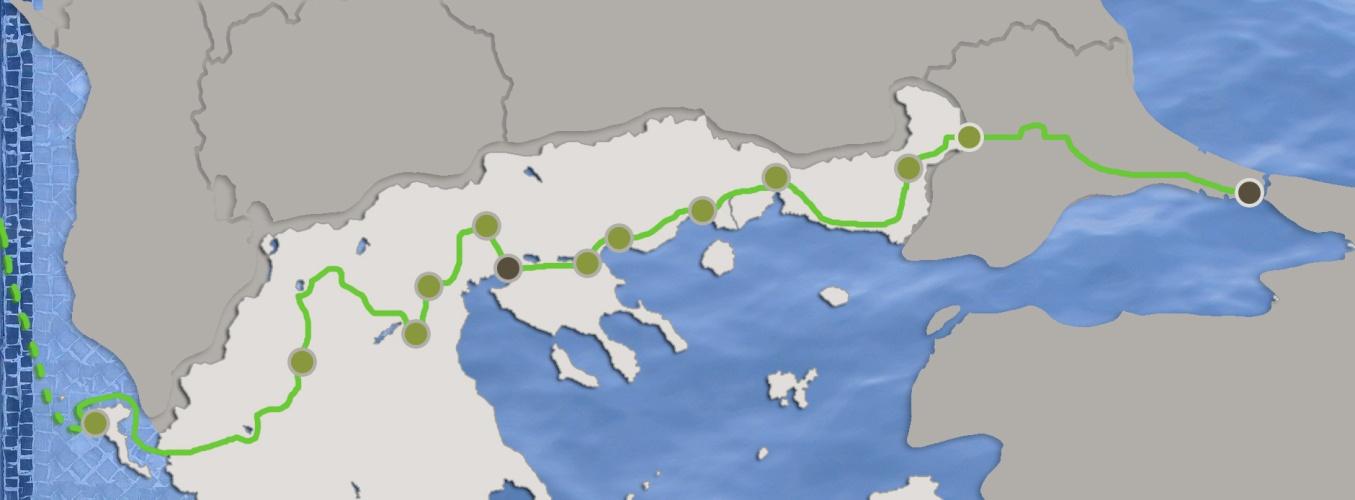 The Roman senator Gnaeus Egnatius received the title of proconsul after 146 BC and became governor of the province of Macedonia, linking his name with one of the main streets that crossed the Balkans, the Via Egnatia. This main trade route was the eastward extension of Trajan’s road (Via Traiana), which ran from Rome to the southeast and ended in Gnathia (Egnatia), between Bari and Brindisi, the major ports of the Adriatic.It passed close to old and new cities such as Lychnidos (Ohrid), Heraclea of Lyngou, Pella and Thessaloniki, where it ended, at least during its first phase. More
The Roman senator Gnaeus Egnatius received the title of proconsul after 146 BC and became governor of the province of Macedonia, linking his name with one of the main streets that crossed the Balkans, the Via Egnatia. This main trade route was the eastward extension of Trajan’s road (Via Traiana), which ran from Rome to the southeast and ended in Gnathia (Egnatia), between Bari and Brindisi, the major ports of the Adriatic.It passed close to old and new cities such as Lychnidos (Ohrid), Heraclea of Lyngou, Pella and Thessaloniki, where it ended, at least during its first phase. More
Thessaloniki - Mystras: "Constantine XI Palaiologos"
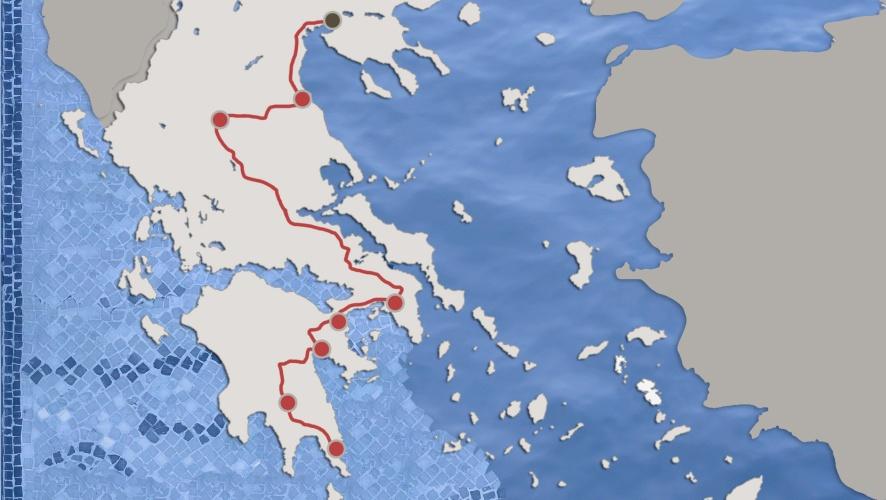 On October 31st 1448 Emperor Ioannis VIII died without an heir. His brother Constantine, who was despot of Mystra rose to the throne. Legend has it he was crowned emperor in the capital of the Despotate in January 1449 and two months he traveled to Constantinople, where he was triumphantly welcomed. Thessaloniki, the second largest city of Byzantium, had already been concurred by the Ottomans of Murad II twenty years earlier, while most of Macedonia had fallen under Turkish rule as early as the late 14th century. The only free state of the southern Balkans was the Despotate of Mystras. More
On October 31st 1448 Emperor Ioannis VIII died without an heir. His brother Constantine, who was despot of Mystra rose to the throne. Legend has it he was crowned emperor in the capital of the Despotate in January 1449 and two months he traveled to Constantinople, where he was triumphantly welcomed. Thessaloniki, the second largest city of Byzantium, had already been concurred by the Ottomans of Murad II twenty years earlier, while most of Macedonia had fallen under Turkish rule as early as the late 14th century. The only free state of the southern Balkans was the Despotate of Mystras. More
Constantinople - Crete: “Nicephorus Phocas”
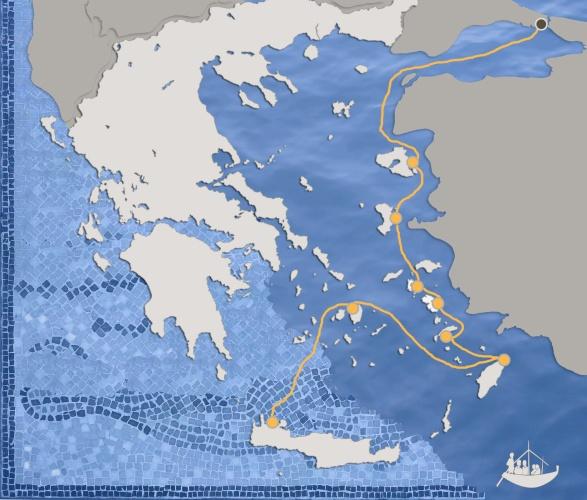 Exploration of the Byzantine world could not but include the broad and culturally rich area of the Aegean archipelago. Although the islands did not play a leading role in the political, religious and artistic developments of the Byzantine Empire, they did follow contemporary trends and serve as the theatre for many important events. Byzantine monuments preserved on the islands plainly and eloquently depict all those elements which changed, influenced and defined history and culture down the centuries; attacks, invasions and violent physical phenomena can be traced through the ruined villages and crumbling monuments. To this day, by examining the large monastery complexes, the extensive and prosperous settlements and the many churches we can determine the periods of boom and prosperity experienced by the islands and the entire empire at particular times. More
Exploration of the Byzantine world could not but include the broad and culturally rich area of the Aegean archipelago. Although the islands did not play a leading role in the political, religious and artistic developments of the Byzantine Empire, they did follow contemporary trends and serve as the theatre for many important events. Byzantine monuments preserved on the islands plainly and eloquently depict all those elements which changed, influenced and defined history and culture down the centuries; attacks, invasions and violent physical phenomena can be traced through the ruined villages and crumbling monuments. To this day, by examining the large monastery complexes, the extensive and prosperous settlements and the many churches we can determine the periods of boom and prosperity experienced by the islands and the entire empire at particular times. More
